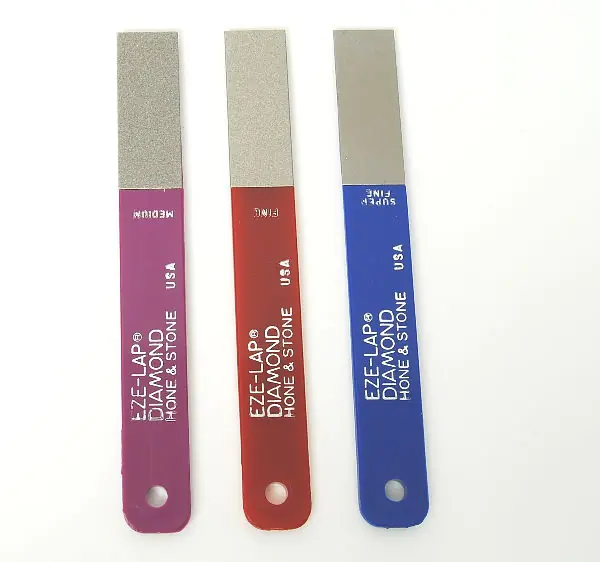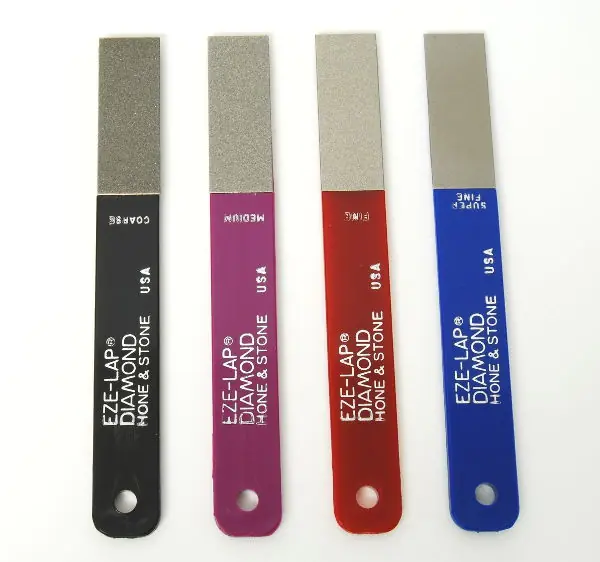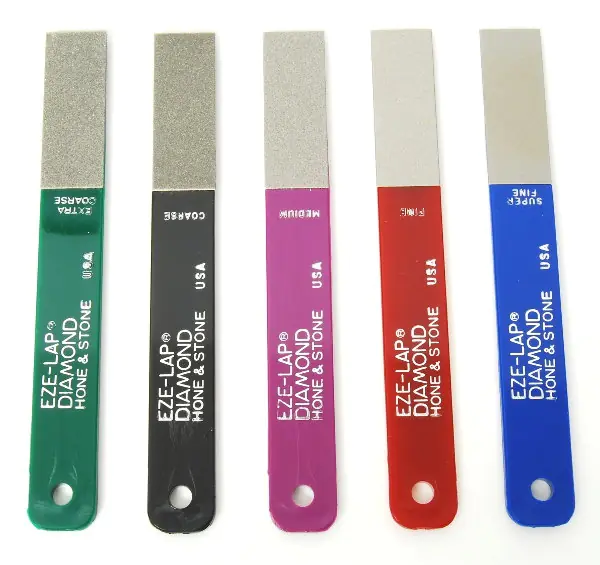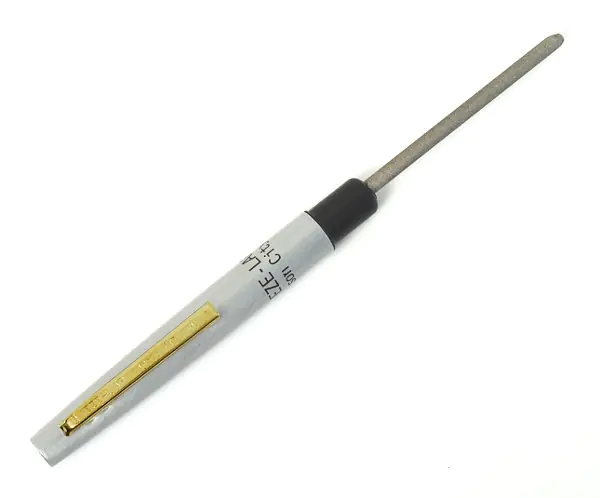January 24, 2025
Interesting facts
What can you expect from diamond grinding stones and what not?
For diamond plates, it is often advertised that they are absolutely flat and cannot be hollow ground. The first part of this statement is only partially true, as absolute flatness cannot be achieved with every production method. However, it is correct that the finished stone cannot be hollow ground.
There are various manufacturing concepts for diamond grinding stones:
We sell the diamond plates both with and without a substrate, as there are very different usage situations. For example, if one needs the sander on the go and wants to save weight and volume, one can do without the substrate but must accept that the flatness suffers. In addition, we offer diamond-coated copper foils that are flexible and self-adhesive. The advantages of a diamond grinding stone: Quickly grinding out notches and changing a bevel angle on plane irons and chisels Fast grinding with high material removal even in the medium grain range Grinding of HM, HSS, and PM steels, where other grinding stones fail The stone does not hollow grind, the existing flatness is maintained Can be used as a flattening block for Japanese water stones; we recommend grain size 140 The disadvantages of a diamond grinding stone: When extreme flatness of the surface is required, a freshly flattened Japanese water stone is superior When honing, i.e., in the fine range, the diamond stone is significantly inferior to a Japanese water stone A diamond grinding stone cannot polish surfaces, such as knife blades A note on service life: it cannot be compared to a stone that wears down and reveals new, sharp particles, but rather to sandpaper, which also has only a thin coating. The comparison is somewhat flawed because sandpaper wears down much faster, but the process is the same: at first, the grains feel very sharp, but only for a short time, then comes the medium sharpness, which lasts a long time, and at the end of the service life, the sharpness declines. The medium sharpness lasts a long time with monocrystalline diamonds. Use the diamond grinding stone with water; it will last longer!
There are various manufacturing concepts for diamond grinding stones:
- A flat-milled block of aluminum or steel is coated with diamond grains. This achieves the best flatness. The disadvantage of this method is the expensive and complex manufacturing process and the high material costs. Therefore, it is rarely used anymore.
- Thin steel plates are coated with diamond stones. These steel plates are then glued to a flat substrate, usually aluminum. Here, the cutting method, deburring, and grinding before coating determine the result. For example, if cut with a laser, heat develops, which can lead to deformation of the material. This deformation is difficult to compensate for with a press bonding on a flat substrate. Therefore, cutting or sawing methods that prevent deformation are superior. Thinner plates also exhibit higher flexibility and adapt better when glued to a rigid substrate.
- A plastic film or copper foil is coated with diamonds, and the underside is self-adhesive. These plates are highly flexible and adapt to any surface. This film can also be glued to rounded substrates, such as sanding blocks. The disadvantage of these soft substrates is that cutting tools can puncture the film, rendering the sander worthless. Therefore, one must develop a certain technique when sanding tools to prevent this.
We sell the diamond plates both with and without a substrate, as there are very different usage situations. For example, if one needs the sander on the go and wants to save weight and volume, one can do without the substrate but must accept that the flatness suffers. In addition, we offer diamond-coated copper foils that are flexible and self-adhesive. The advantages of a diamond grinding stone: Quickly grinding out notches and changing a bevel angle on plane irons and chisels Fast grinding with high material removal even in the medium grain range Grinding of HM, HSS, and PM steels, where other grinding stones fail The stone does not hollow grind, the existing flatness is maintained Can be used as a flattening block for Japanese water stones; we recommend grain size 140 The disadvantages of a diamond grinding stone: When extreme flatness of the surface is required, a freshly flattened Japanese water stone is superior When honing, i.e., in the fine range, the diamond stone is significantly inferior to a Japanese water stone A diamond grinding stone cannot polish surfaces, such as knife blades A note on service life: it cannot be compared to a stone that wears down and reveals new, sharp particles, but rather to sandpaper, which also has only a thin coating. The comparison is somewhat flawed because sandpaper wears down much faster, but the process is the same: at first, the grains feel very sharp, but only for a short time, then comes the medium sharpness, which lasts a long time, and at the end of the service life, the sharpness declines. The medium sharpness lasts a long time with monocrystalline diamonds. Use the diamond grinding stone with water; it will last longer!




